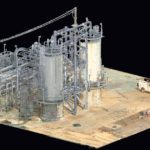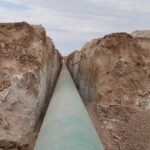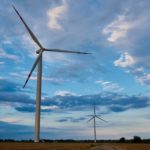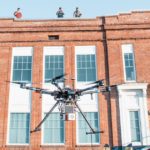The oil and gas industry is known for its challenging and hazardous working environments. Safety, efficiency, and cost-effectiveness are crucial factors in the industry’s success. In recent years, drones have emerged as a game-changer for the oil and gas industry, providing various benefits in inspections, maintenance, and monitoring.
Drones offer a safer, more efficient, and cost-effective solution to traditional inspection methods. They can access hard-to-reach areas and provide high-resolution images and videos that enable inspectors to identify potential issues quickly.
Drones are increasingly used in the industry for different applications, from right-of-way aerial imagery to offshore and pipeline inspections. With drone technology continually evolving, its use in the oil and gas industry is set to become even more prevalent, making them an indispensable tool in the sector’s future.
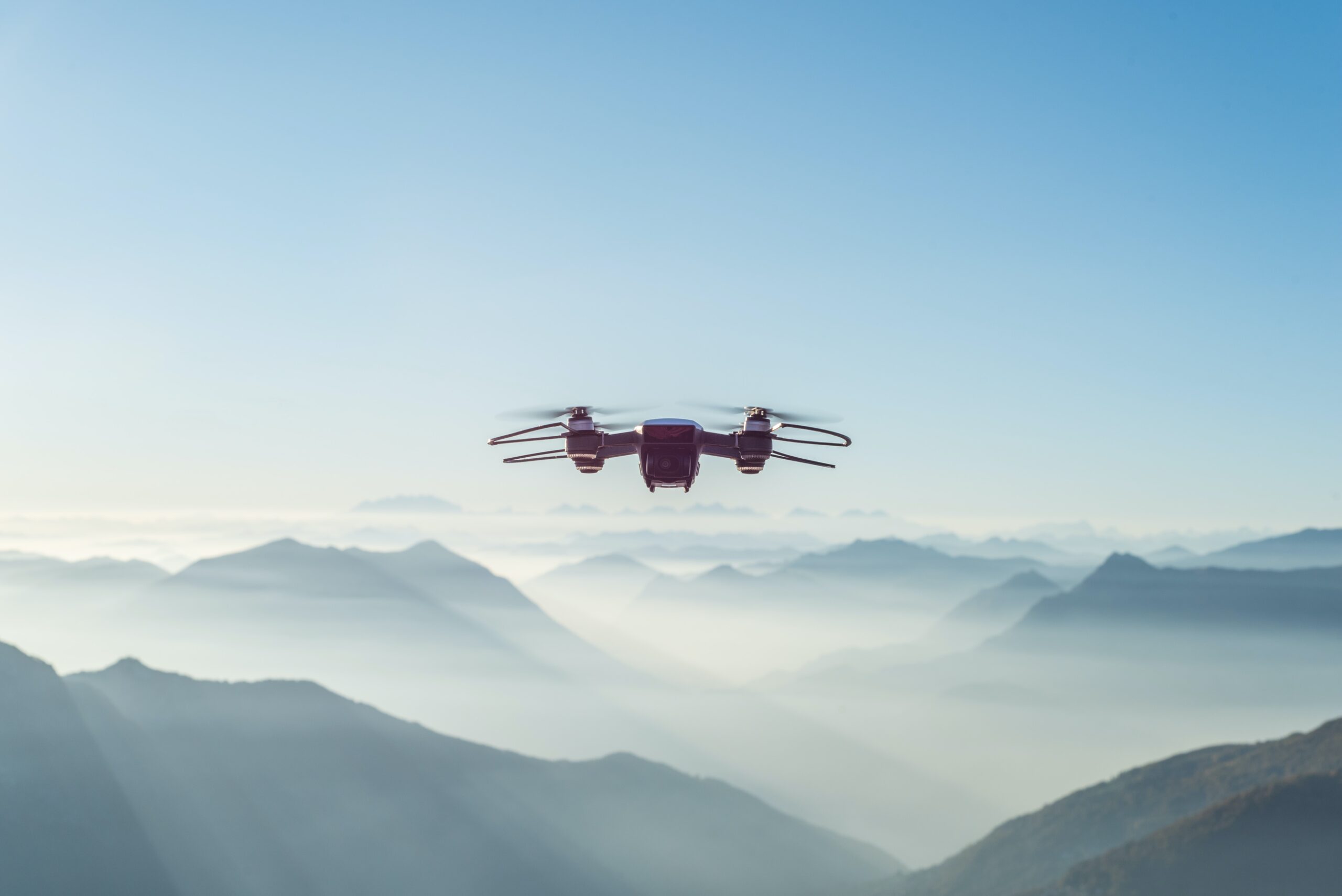
via Unsplash
In this article, we will cover all of your questions about the uses of drones in the oil and gas industry. We will discuss the ways in which drones are used for different types of inspections as well as the many benefits they offer. Keep reading to discover everything that’s possible with the proliferation of drones in this industry.
Common Uses of Drones in the Oil and Gas Industry
Drones, also known as unmanned aerial vehicles (UAVs), have revolutionized the way industries operate, and the oil and gas sector is no exception. These versatile machines can perform a range of tasks in the industry, from aerial imaging to offshore inspections, reducing risks and improving safety while providing a cost-effective and efficient solution when compared with traditional methods.
The following topics are some of the most common ways in which the oil and gas industry has been able to harness the power of drones. As you’ll see, these new-age tools have made a huge difference in the level of access that oil and gas engineers are able to achieve.

via Unsplash
Right-of-Way Aerial Imagery
One of the most common uses of drones in the oil and gas industry is obtaining high-resolution aerial imagery of the right-of-way. In this field, a right-of-way (or ROW) is the property in which a pipeline company and a landowner both have legal interest. Both the landowner and pipeline company have a right to be there.
A right-of-way supersedes the landowner’s privilege to be on certain land and allows a pipeline to travel through that space. Before a pipeline is laid down, imagery and assessment will need to be conducted in order to ensure that the right-of-way is clear and good to go.
With the ability to fly at various altitudes and capture images at different angles, drones can provide detailed, accurate maps of pipelines, transmission lines, and other infrastructure. This information helps to identify potential issues, such as vegetation growth, erosion, or damage, allowing maintenance teams to take timely action before any significant problems arise.
As-Built Surveys
As-built surveys are another crucial application of drones in the oil and gas industry. These surveys help companies keep track of any changes in the field, such as new construction or infrastructure development. By using drones to perform these surveys, companies can obtain detailed, high-resolution images of the area, which can be analyzed to create 3D models and accurate measurements.
Confined Spaces
Drones equipped with specialized cameras and sensors can also access confined spaces in refineries, pipelines, and storage tanks. These machines can detect leaks, corrosion, and other damage to human inspectors in inaccessible or hazardous areas. Using drones for confined space inspections improves safety, reduces risks, and increases the speed of inspections, resulting in a more efficient and cost-effective process.
Site Selection
Drones can also assist in the site selection process by providing high-resolution images and 3D maps of potential locations. Companies can use this information to evaluate the suitability of a site for oil and gas exploration, identify potential hazards, and determine the best location for infrastructure development.
This is also an important component of determining a pipeline right-of-way. Before legal moves are made, a company will want to ensure that the sought-after ROW is actually the best place to run the pipeline – and if they don’t confirm this, they may squander lots of money in legal fees only to have to change the pipeline’s trajectory.
Offshore Inspections
Finally, drones are also used for offshore inspections, which are time-consuming and dangerous for human inspectors. With the ability to fly long distances, drones can inspect offshore platforms, pipelines, and other infrastructure quickly and efficiently, providing real-time information on any issues or damage.
Drones have become an essential tool in the oil and gas industry, providing a range of applications, from right-of-way aerial imagery to offshore inspections. With the ability to improve safety, reduce risks, and increase efficiency, drones are set to play an increasingly vital role in the industry’s future.
Offshore drone inspections have changed the oil and gas industry, providing a safer and more efficient way to inspect offshore infrastructure. These inspections can be broken down into three categories: deck and riser inspections, tanker inspections, and oil spill detection.
Deck and Riser Inspections
Drones can provide detailed inspections of offshore platforms and rigs, including the risers that connect them to the seabed. With high-resolution cameras and sensors, drones can detect any signs of corrosion, damage, or wear and tear, allowing maintenance teams to take timely action before significant problems arise.
Tanker Inspections
Drones can also inspect tankers and other vessels, checking for any signs of damage or leaks. By flying over the vessel and capturing images with thermal cameras, drones can detect even the smallest leaks, reducing the risk of environmental damage and costly clean-up operations.
Oil Spill Detection
Finally, drones can be used for oil spill detection, a crucial task in the oil and gas industry. By flying over the affected area and capturing images with thermal cameras, drones can detect the location and extent of the spill, allowing response teams to take immediate action.
Offshore drone inspections have proven to be a valuable tool in the oil and gas industry. Drones provide a safer, more efficient, and cost-effective solution for the industry’s inspection needs, from deck and riser inspections to tanker inspections and oil spill detection.
How Are Drones Used for Pipeline Inspection?
Some of the ways that drones are used for pipeline inspections include visual inspections, thermal imaging, and LiDAR technology. Drones have become a popular tool in the oil and gas industry, especially for pipeline inspections. Pipeline inspections are critical to ensure the pipelines are safe and functioning correctly.
Traditionally, these inspections were conducted by ground personnel, which was both time-consuming and risky. However, drones have transformed the inspection process by providing a safer and more efficient solution.

via Unsplash
Visual Inspections
Visual inspections using drones detect any visual signs of damage, corrosion, or leaks. With the help of high-resolution cameras, drones can capture detailed images of pipelines from various angles, allowing inspectors to identify potential issues that would be difficult to detect from the ground. Drones can also capture footage of hard-to-reach or inaccessible areas, such as pipeline sections in remote difficult-to-access locations.
Thermal Imaging
Thermal imaging is another common method used for pipeline inspections. Drones equipped with thermal cameras can detect hotspots, indicating possible leaks or cracks in the pipeline. Thermal imaging is especially useful for identifying pipeline issues in areas where vegetation or other factors obstruct the view of the pipeline.
LiDAR Technology
LiDAR (Light Detection and Ranging) technology is also becoming popular for pipeline inspections. This technology uses lasers to create a 3D map of the pipeline’s environment, allowing inspectors to identify potential hazards and structural issues. LiDAR technology provides highly accurate information on pipeline conditions, enabling maintenance teams to take timely action to prevent issues from worsening.
Drones transform pipeline inspections in the oil and gas industry, providing a safer, more efficient, and cost-effective solution than traditional methods. With the constant evolution of drone technology, the use of drones for pipeline inspections will become even more prevalent. By using drones for pipeline inspections, inspectors can identify potential issues before they become significant problems, preventing environmental damage and costly repairs.
Benefits of Drones for Oil and Gas Inspections
Using drones in the oil and gas industry has numerous benefits, particularly for inspections. These benefits include improved safety, accuracy, speed, and budget consciousness.
Safety
One of the most significant benefits of using drones for oil and gas inspections is improved safety. Traditional inspection methods often require personnel to work at heights or in confined spaces, exposing them to various hazards. By using drones, inspections can be conducted remotely, minimizing the risks to personnel. Furthermore, drones can access difficult or impossible areas, reducing risks.
Increased Accuracy
Drones also provide increased accuracy in inspections. They can capture detailed, high-resolution images and videos that can be analyzed to identify potential issues with infrastructure, such as leaks or damage. Additionally, drones can inspect various angles and heights, giving inspectors a more comprehensive view of the infrastructure.
Speed
Using drones for inspections also increases the speed of the inspection process. Drones can cover larger areas in less time than traditional inspection methods. Inspections can be conducted more frequently, allowing for the timely identification of potential issues before they become significant problems. This can result in fewer disruptions to operations and improved efficiency.
Budget-Consciousness
Finally, drones for oil and gas inspections are also budget-conscious. Drones provide a cost-effective alternative to traditional inspection methods that often require expensive equipment, personnel, and logistics. By using drones, companies can reduce inspection costs while maintaining high accuracy and safety levels.
With the evolution of technology, using drones for oil and gas inspections has become more popular as it provides many different benefits to the industry, including improved safety, increased accuracy, speed, and budget consciousness. As drone technology evolves, these benefits will likely increase, making drones an increasingly important tool in the oil and gas industry.
Final Thoughts
Drones have become essential in the oil and gas industry, providing invaluable benefits in inspections, maintenance, and monitoring. From improving safety to increasing accuracy, speed, and cost-effectiveness, drones offer a range of advantages over traditional inspection methods. They have revolutionized oil and gas industry practices to the benefit of all.
The use of drones in the industry is set to become even more prevalent, with technological advancements providing new and exciting possibilities for the future. As the industry evolves, drones will play a vital role in ensuring a safe and productive working environment for all those working in the energy and pipeline sectors.

